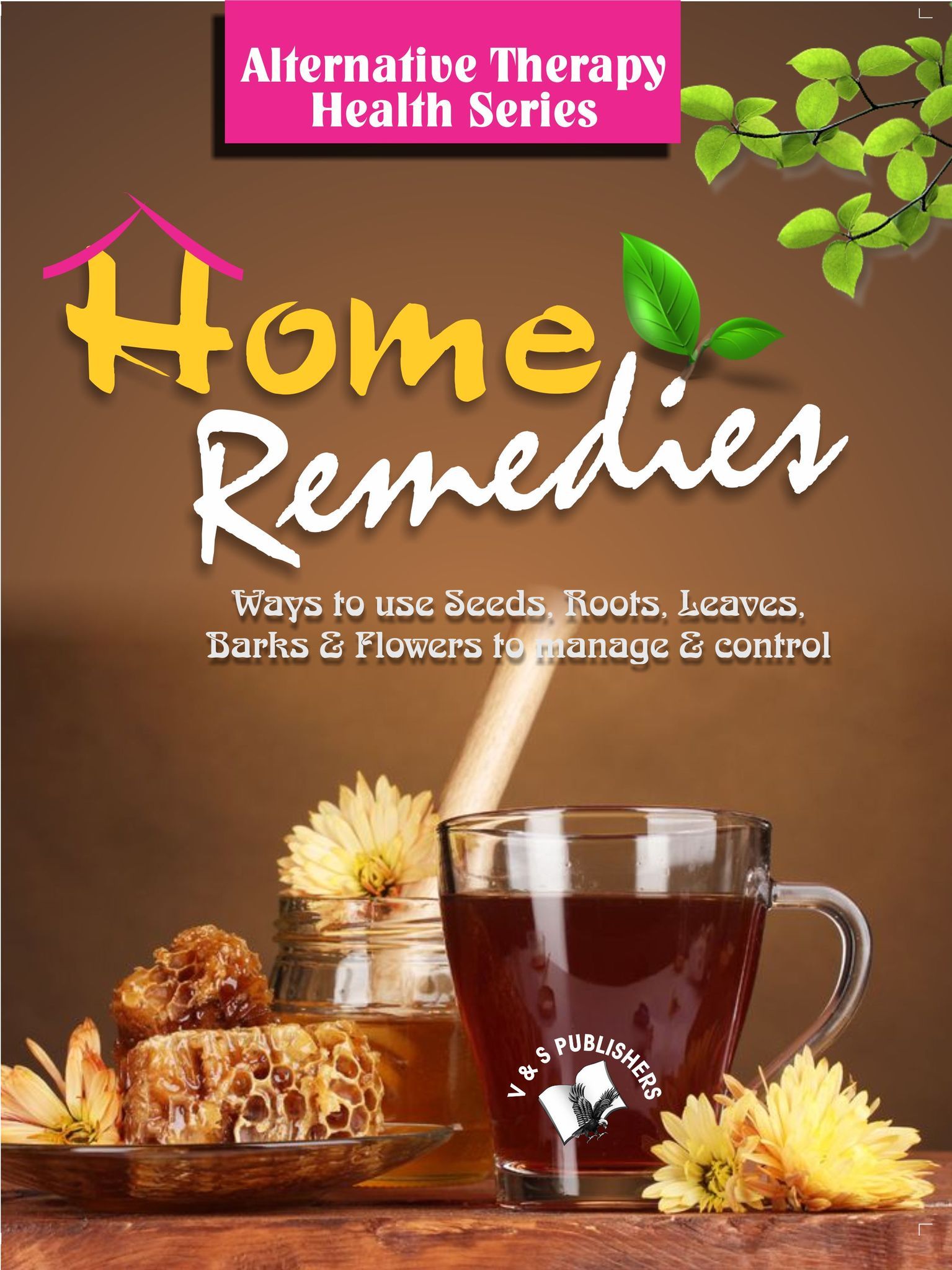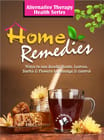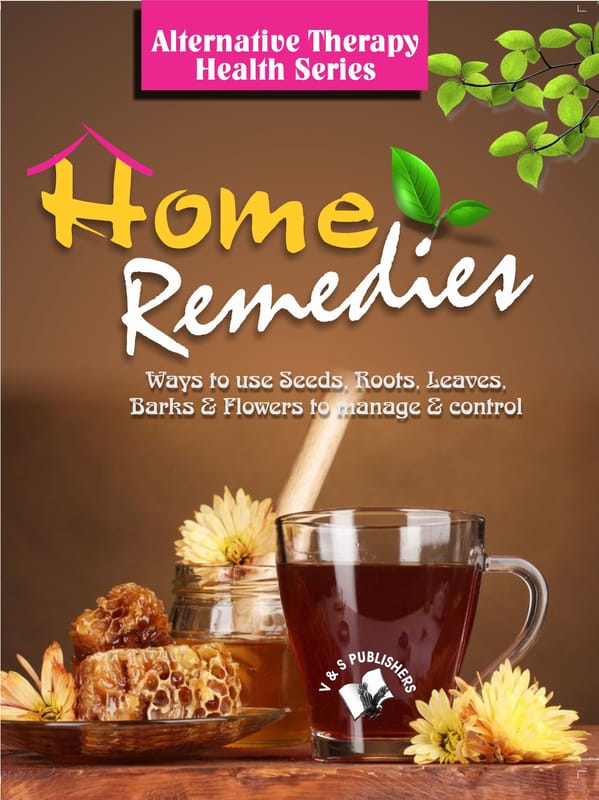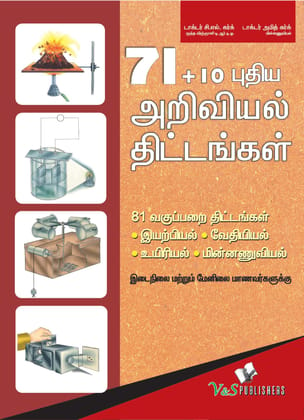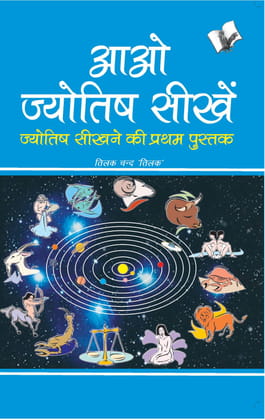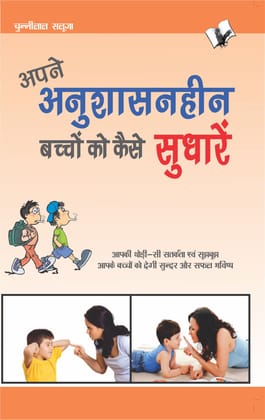Home Remedies
1 unit
₹296
MRP ₹395
Sold By:V&S Publishers
Available offers
- VSPUB -5% OFF V&S Publisher – Don't Miss Out! Code:VSPUB. T&C
- Enjoy Free Shipping on All orders
| Country of origin | India |
|---|---|
| Brand | V&S Publishers |
| Material | cellulose |
| Colour | black |
| Common name | Books |
| Net Quantity | 1 unit |
| Manufacturer or packer name | V&S Publishers |
| Manufacturer or packer address | V&S Publishers F-2/16 Ansari Road, Darya Ganj New Delhi - 110825 |
| Manufacturing Date | 25-10-2019 |
| ISBN | 9.79E+12 |
| contact details consumer care | V&S Publishers , [email protected], +919971616239 |
This book offers remedies through products, spices and other flavouring agents we use in our kitchen everyday by focusing on its uses. Kitchen products often provide a safe, effective, and economical alternative to pharmaceuticals, and research validates this finding. This book discusses the causes and offers treatment for ailments such as Allergy, Alzheimer's, Anemia, Appendicitis, Arthritis, Asthma, Backache, Bronchitis, Burns, Cholera, Cold & Fever, Constipation, Cough, Dandruff, Depression, Diabetes, Hair loss, Headache, Heart problem, Insomnia, Jaundice, Kidney stones, Low & High Blood pressure, Migraine, Obesity, Rheumatism, Sexual impotence, Stomach ache, Stress, Whooping cough and for meeting emergency situations, which every family faces at some point of time. Many modern drugs are actually derived from fresh and dried edible parts of plants.
These are less likely than pharmaceuticals to cause side effects which, when they do occur, are generally far milder. While Western medicine seeks to isolate a single active ingredient, kitchen medicine relies on the synergistic action of their many constituents. These work physiologically to restore balance in the body rather than simply targeting a symptom. As a result, kitchen spices/products often tend to take effect more slowly than pharmaceuticals but have a greater impact on whole body wellness. The exposition of maladies and their remedies have been given in the ready reckoner style in suggesting medicines according to specific symptoms and have been given in an alphabetical order of ailments. CONTENTS: Introduction 1. SALAD PLANTS 1.1 Carrot (Gajar) 1.2 Cucumber (Kheera) 1.3 Lemon (Neebu) 1.4 Onion (Pyaz) 1.5 Radish (Mooli) 1.6 Sugar Beet (Chukandar) 1.7 Tomato (Tamatar) 2.CONDIMENTS 2.1Asafoetida (Hing) 2.2 Bishop's Weed (Ajwain) 2.3 Caraway (Kalajira) 2.4 Celery (Ajmud) 2.5 Coriander (Dhania) 2.6 Cumin (Jira) 2.7 Fennel (Saunf) 2.8 Fenugreek (Methi) 2.9 Red Pepper [Lal Mirch (Chilli)] 2.10 Turmeric (Haldi) 3. SPICES 3.1 Black Pepper (Kali Mirch) 3.2 Cinnamon (Dal Chini) 3.4 Clove (Laung) 3.5 Large Cardamom (Bari Ilaichi) 3.6 Long Pepper (Peepar) 3.7 Javitri [Aril (Nutmeg)], Jaiphal (Seed) 3.8 Small Cardamom (Chhoti Ilaichi) 3.9 Tamala (Tejpat) 4. FLAVOUR YIELDING PLANTS 4.1 Garlic (Lahsun) 4.2 Ginger (Adarakh) 4.3 Indian Mustard (Rai) 4.4 Mint (Pudina) 5 VEGETABLES 5.1 Amaranth (Chaulai) 5.2 Bitter Gourd (Karela) 5.33 Bottle Gourd (Lauki) 5.4 Brinjal [Egg Plant (Baingan)] 5.5 Broad Bean (Bakla) 5.6 Cabbage (Patta Gobhi, Karamkalla) 5.7 Cluster Bean (Guar) 5.8 Lady's Finger (Bhindi) 5.9 Loofah (Torai) 5.10 Potato (Aloo) 5.11 Pumpkin, Red Gourd (Kaddoo, Kashiphal) 5.12 Round Gourd (Tinda) 5.13 Spinach (Palak) 5.14 Sweet Potato (Shakarkand) 5.15 Turnip (Shalgam) 5.16 White Goose Foot (Bathua) 6. OILS 6.1 Castor Oil (Andi, Arand) 6.2 Coconut Oil (Nariyal) 6.3 Linseed Oil (Alsi Ka Tel) 6.4 Mustard Oil (Sarson) 6.5 Sesame Oil (Til) 7 CEREALS 7.1 Barley (Jau) 7.2. Maize or Corn (Makka) 7.3. Oat (Jai) 7.4. Rice or Paddy (Chaval or Dhan) 7.5. Wheat (Gehun) 8. PULSES 8.1. Black Gram (Urad) 8.2. Gram (Chick Pea) [Chana] 8.3. Pea (Matar) 8.4. Pigeon Pea (Arhar) 9. NATURAL PRODUCTS 9.1. Alum (Phitkari) 9.2 Ghee (Ghee) 9.3 Honey (Madhu, Shahad) 9.4 Kerosene Oil (Mitti Ka Tel) 9.5 Salt (Namak) 9.6 Water (Pani) 9.7 MIRACLES OF WATER THERAPY 10. FOOD TIPS— DO’S& DON’TS 10.1. GLOSSARY 10.2. BIBLIOGRAPHY
These are less likely than pharmaceuticals to cause side effects which, when they do occur, are generally far milder. While Western medicine seeks to isolate a single active ingredient, kitchen medicine relies on the synergistic action of their many constituents. These work physiologically to restore balance in the body rather than simply targeting a symptom. As a result, kitchen spices/products often tend to take effect more slowly than pharmaceuticals but have a greater impact on whole body wellness. The exposition of maladies and their remedies have been given in the ready reckoner style in suggesting medicines according to specific symptoms and have been given in an alphabetical order of ailments. CONTENTS: Introduction 1. SALAD PLANTS 1.1 Carrot (Gajar) 1.2 Cucumber (Kheera) 1.3 Lemon (Neebu) 1.4 Onion (Pyaz) 1.5 Radish (Mooli) 1.6 Sugar Beet (Chukandar) 1.7 Tomato (Tamatar) 2.CONDIMENTS 2.1Asafoetida (Hing) 2.2 Bishop's Weed (Ajwain) 2.3 Caraway (Kalajira) 2.4 Celery (Ajmud) 2.5 Coriander (Dhania) 2.6 Cumin (Jira) 2.7 Fennel (Saunf) 2.8 Fenugreek (Methi) 2.9 Red Pepper [Lal Mirch (Chilli)] 2.10 Turmeric (Haldi) 3. SPICES 3.1 Black Pepper (Kali Mirch) 3.2 Cinnamon (Dal Chini) 3.4 Clove (Laung) 3.5 Large Cardamom (Bari Ilaichi) 3.6 Long Pepper (Peepar) 3.7 Javitri [Aril (Nutmeg)], Jaiphal (Seed) 3.8 Small Cardamom (Chhoti Ilaichi) 3.9 Tamala (Tejpat) 4. FLAVOUR YIELDING PLANTS 4.1 Garlic (Lahsun) 4.2 Ginger (Adarakh) 4.3 Indian Mustard (Rai) 4.4 Mint (Pudina) 5 VEGETABLES 5.1 Amaranth (Chaulai) 5.2 Bitter Gourd (Karela) 5.33 Bottle Gourd (Lauki) 5.4 Brinjal [Egg Plant (Baingan)] 5.5 Broad Bean (Bakla) 5.6 Cabbage (Patta Gobhi, Karamkalla) 5.7 Cluster Bean (Guar) 5.8 Lady's Finger (Bhindi) 5.9 Loofah (Torai) 5.10 Potato (Aloo) 5.11 Pumpkin, Red Gourd (Kaddoo, Kashiphal) 5.12 Round Gourd (Tinda) 5.13 Spinach (Palak) 5.14 Sweet Potato (Shakarkand) 5.15 Turnip (Shalgam) 5.16 White Goose Foot (Bathua) 6. OILS 6.1 Castor Oil (Andi, Arand) 6.2 Coconut Oil (Nariyal) 6.3 Linseed Oil (Alsi Ka Tel) 6.4 Mustard Oil (Sarson) 6.5 Sesame Oil (Til) 7 CEREALS 7.1 Barley (Jau) 7.2. Maize or Corn (Makka) 7.3. Oat (Jai) 7.4. Rice or Paddy (Chaval or Dhan) 7.5. Wheat (Gehun) 8. PULSES 8.1. Black Gram (Urad) 8.2. Gram (Chick Pea) [Chana] 8.3. Pea (Matar) 8.4. Pigeon Pea (Arhar) 9. NATURAL PRODUCTS 9.1. Alum (Phitkari) 9.2 Ghee (Ghee) 9.3 Honey (Madhu, Shahad) 9.4 Kerosene Oil (Mitti Ka Tel) 9.5 Salt (Namak) 9.6 Water (Pani) 9.7 MIRACLES OF WATER THERAPY 10. FOOD TIPS— DO’S& DON’TS 10.1. GLOSSARY 10.2. BIBLIOGRAPHY

Sold By
V&S Publishers
Not Cancellable
Not Returnable
